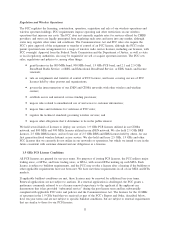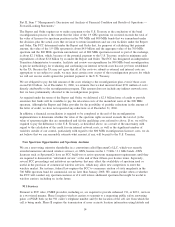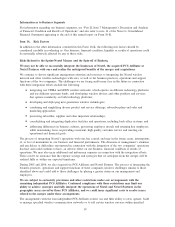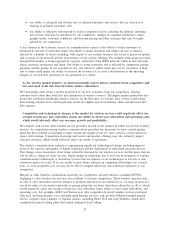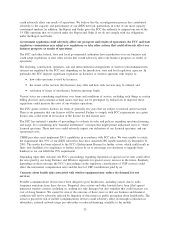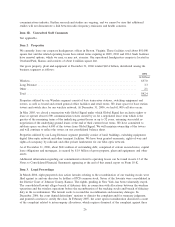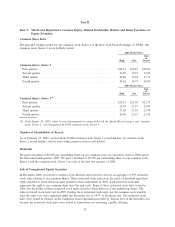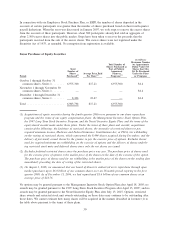Sprint - Nextel 2006 Annual Report Download - page 23
Download and view the complete annual report
Please find page 23 of the 2006 Sprint - Nextel annual report below. You can navigate through the pages in the report by either clicking on the pages listed below, or by using the keyword search tool below to find specific information within the annual report.kour ability to anticipate and develop new or enhanced products and services that are attractive to
existing or potential customers; and
kour ability to anticipate and respond to various competitive factors affecting the industry, including
new services that may be introduced by our competitors, changes in consumer preferences, demo-
graphic trends, economic conditions, and discount pricing and other strategies that may be imple-
mented by our competitors.
A key element in the economic success of communications carriers is the ability to retain customers as
measured by the rate of subscriber churn. Our ability to retain customers and reduce our rate of churn is
affected by a number of factors including, with respect to our wireless business, the actual or perceived quality
and coverage of our network and the attractiveness of our service offerings. For example, peak usage in certain
metropolitan markets is being impacted by capacity constraints of the iDEN network, which in turn adversely
affects customer satisfaction and churn. Our ability to retain customers also is affected by competitive pricing
pressures and the quality of our customer service. Our efforts to reduce churn may not be successful. A high
rate of churn could impair our ability to increase the revenues of, or cause a deterioration in the operating
margins of, our wireless operations or our operations as a whole.
As the wireless market matures, we must increasingly seek to attract customers from competitors and
face increased credit risk from first time wireless subscribers.
We increasingly must attract a greater proportion of our new customers from our competitors’ existing
customer bases rather than from first time purchasers of wireless services. The higher market penetration also
means that customers purchasing wireless services for the first time, on average, have a lower credit rating
than existing wireless users, which generally results in a higher rate of involuntary churn and increased bad
debt expense.
Competition and technological changes in the market for wireless services could negatively affect our
average revenue per user, subscriber churn, our ability to attract new subscribers and operating costs,
which would adversely affect our revenues, growth and profitability.
We compete with several other wireless service providers in each of the markets in which we provide wireless
services. As competition among wireless communications providers has increased, we have created pricing
plans that have resulted in declining average revenue per minute of use for voice services, a trend which we
expect will continue. Competition in pricing and service and product offerings may also adversely impact
customer retention, which would adversely affect our results of operations.
The wireless communications industry is experiencing significant technological change, including improve-
ments in the capacity and quality of digital technology and the deployment of unlicensed spectrum devices.
This change causes uncertainty about future subscriber demand for our wireless services and the prices that we
will be able to charge for these services. Rapid change in technology may lead to the development of wireless
communications technologies or alternative services that are superior to our technologies or services or that
consumers prefer over ours. If we are unable to meet future advances in competing technologies on a timely
basis, or at an acceptable cost, we may not be able to compete effectively and could lose customers to our
competitors.
Mergers or other business combinations involving our competitors and new entrants, including MVNOs,
beginning to offer wireless services may also continue to increase competition. These wireless operators may
be able to offer subscribers network features or products and services not offered by us, coverage in areas not
served by either of our wireless networks or pricing plans that are lower than those offered by us, all of which
would negatively affect our average revenue per user, subscriber churn, ability to attract new subscribers, and
operating costs. For example, AT&T and Verizon now offer competitively-priced wireless services packaged
with local and long distance voice and high-speed Internet services, and our Boost Mobile-branded prepaid
service competes with a number of regional carriers, including Metro PCS and Leap Wireless, which offer
competitively-priced calling plans that include unlimited local calling.
21


